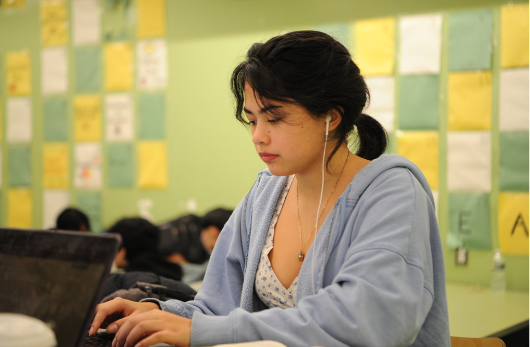Winter break, for many, is a perfect time for people to sleep in, laze around, and finally take a well-deserved break. Bronx Science students enjoy these perks as well, but they do have some studying to do. Less than a month after the short December 2023 Winter break, Bronx Science students have their annual Uniform MidYears starting on Tuesday, January 23rd, 2024. The Uniform MidYears follow a rigorous schedule, with different exams occurring daily, and for a few students, even two exams consecutively on the same day.

For all Bronx Science students, Uniform MidYears are still a relatively new concept. Bronx Science has held them for many years, and they have a long and storied tradition at our school, but there was a pause in administering them during the early years of the COVID-19 pandemic. For many Bronx Science students, including current seniors and juniors, January 2023 was the first year that they took Bronx Science’s Uniform MidYear exams.
Pros and Cons
The Uniform MidYears at Bronx Science are cumulative, allowing teachers and students to grasp an understanding of where they are in the curriculum. This allows students to enforce their understanding of their respective subject before transitioning to new content, based on old topics, in the next semester.
Additionally, while studying for the Uniform MidYears, students can review the material, further enhancing their skills for upcoming exams, such as APs and the Regents. Many teachers, especially those teaching Advanced Placement classes, format their Uniform Midyear Exams modeled off of real Advanced Placement exams, allowing students to gain insight into what it would be like to take the actual test before they do so in May 2024.
As would be expected, many students have mixed opinions on Uniform MidYears (few students love tests). On one side, some think it is beneficial, as Uniform MidYear exams have been known to be a grade booster for many students. In most classes, their Uniform MidYear exam grade replaces their lowest test grade from the Fall semester.
In these cases, the Uniform MidYears are almost favored by students. “I didn’t know what I was doing in class, and bombed several exams, so the MidYear was my ‘redemption’ in a sense. Although it only replaced one grade, it still boosted my GPA tremendously,” said Ivan Cheng ’24.
Others, like Winston Le ’24, believe that MidYears cause unnecessary stress. “The Uniform MidYears take up too much time, both directly and indirectly. We need to take the time to get tested, eliminating four days of teaching time from the academic year. Teachers also have to write, grade, and schedule their teaching around midyears, which is probably annoying for them to have to do. Indirectly, the existence of midyears creates costs through studying for them. The time spent studying for midyears is time that could have been spent studying for other smaller exams, doing projects in place of midyear exams, and on leisure time,” Le said.
Tips and Tricks
Ideally, every student should start studying weeks in advance, but other classroom assignments tend to pile up before Winter break, reducing the time students have for dedicated study for their MidYears.
Bronx Science students have much advice to offer as to where students should best focus their attention in order to prepare for MidYears. Noelle Delosreyes ’27 said that she “breaks up [her] study sessions into small periods of around 30 to 60 minutes for each subject.” “I use multiple study methods like rewriting notes, the Feynman Method, and blurting,” Delosreyes said. The Feynman Method involves taking something difficult to understand and trying to clarify it by explaining the topic as if they were talking to a child. This breaks down complex ideas using simple language, making them easier to memorize. The Blurting Method of studying is reading a text or notes, then writing down what you recall. This strengthens the memory, proving useful for classes that are memorization based.
Before the Uniform MidYears and during the school year, the majority of Bronx Science teachers provide slideshow presentations that are reviewed in class, or provide textbooks and links to external websites that will assist students in their learning process. Raisa Kamal ’24 said, “For Biology and Psychology, we are given textbooks, and I find that rereading sections of each textbook and taking down detailed notes are very helpful. Not to mention that there are many other free online resources, such as AP Classroom and Khan Academy, that help to further test me or teach me something if I don’t understand it.” AP Classroom and Khan Academy offer additional practice problems surrounding the subject, allowing students to further practice their understanding of the material.
Reviewing homework assignments and classwork questions is also crucial. Taking into account the fact that the teachers all contribute to creating the Uniform MidYear exams each year, the homework and classwork that they provide to students during the Fall semester will most likely be similar to the actual MidYear questions that students will be given on the exam.
In scenarios like these, timing is key. It is infinitely more favorable to start studying weeks prior to the Uniform MidYear exams as opposed to waiting until the week of the exams. Students also find that it is better to arrange classes from least to most important, dedicating appropriate time intervals for each one. More difficult classes should be the top priority, and vice versa. Tahmid Rahi ’25 said, “Dedicate two hours per subject, for the first half of your subjects, and then the week before, do the same for the last half of your subjects. Then when the weekend rolls around, review and see what you might have potentially forgotten, and what you need to potentially need to review again. On the last day before the test, don’t study any new concepts. It is vital to hang onto the concepts you spent two weeks practicing and memorizing. Just do a healthy mix of practice, and then actually go to bed early.”
However, procrastination always plays a role, especially in the stress level of students before the Uniform MidYears. “Stop procrastinating,” is a phrase commonly thrown around. Yet, this is easier said than done. To avoid procrastination, many students form study groups, where they dedicate a few hours a week to study with friends and classmates. Janet Liu ’24 vocalized the benefits of studying with a peer. “I find it easier to study with a friend, as I can ask them questions, and we can work on the problems together, which also allows me to learn. I’ve been staying after school with friends to review Uniform MidYear materials together,” Liu said.
Studying a specific way for Uniform MidYears may work for some students but not others, so it is best if students try a variety of ways to maximize their potential. Best of luck on your upcoming Uniform MidYear exams!
Bronx Science students have much advice to offer as to where students should best focus their attention in order to prepare for MidYears. Noelle Delosreyes ’27 said that she “breaks up [her] study sessions into small periods of around 30 to 60 minutes for each subject.”

